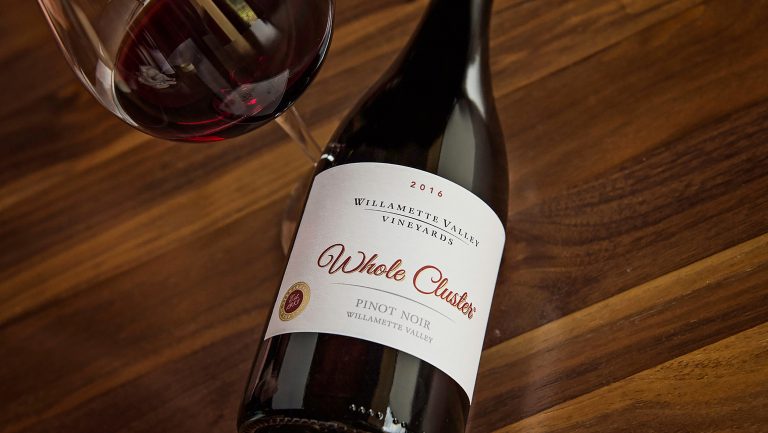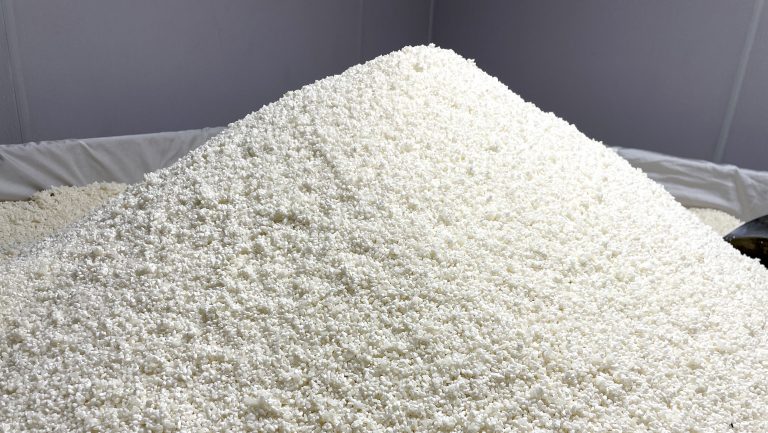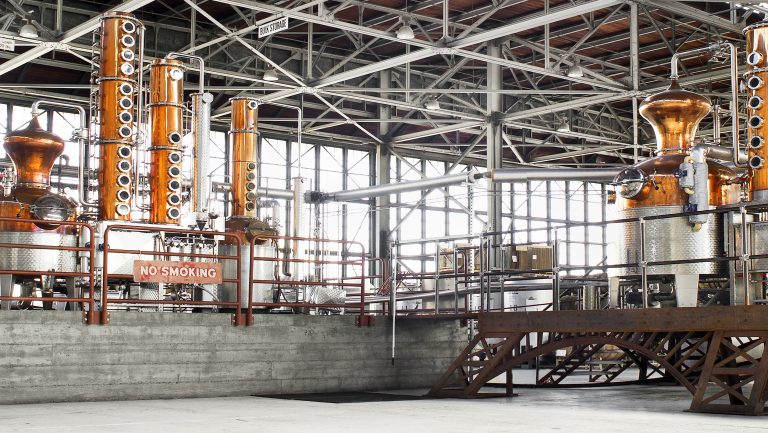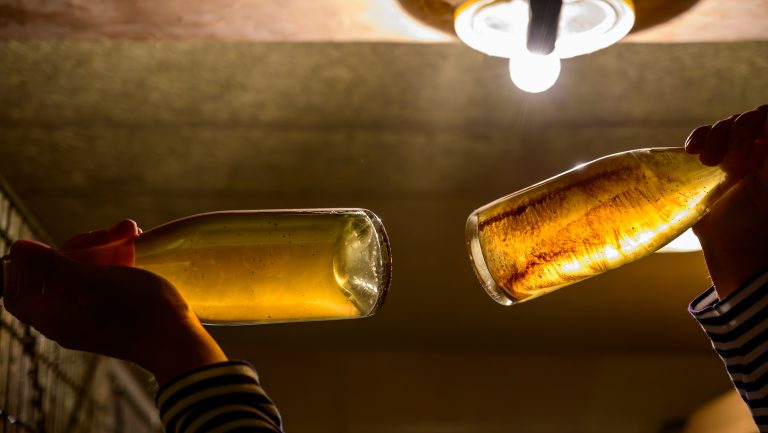The rise of mechanical destemming over the course of the the 20th century means that nowadays the great majority of wines are made from fruit without stems. Traditionally, that wasn’t the case, and a number of producers—for a variety of reasons—still find advantages to fermentation with whole clusters of grapes on their stems.
Whole-cluster fermentation offers a range of complementary, and sometimes contradictory, effects. “There’s a huge variety of things you can do with whole cluster,” says Michael Attanasi of the Winemakers Research Exchange in Virginia, which helps winemakers evaluate various techniques and practices scientifically. “Winemakers do it for lots of different reasons.”
To start with, the chemistry of grape stems has an impact on the wine. Stems abound in phenolic compounds, particularly tannins, and often the decision to include stems in the fermentation is intended to influence the tannic character of the wine.

Don’t miss the latest drinks industry news and insights. Sign up for our award-winning newsletters and get insider intel, resources, and trends delivered to your inbox every week.
At Gary Farrell Winery in Healdsburg, California, the winemaker Theresa Heredia deploys those tannins elegantly in her Pinot Noirs. “I like to use whole-cluster fermentation for several reasons,” she says. “To add spice, structure, and black tea flavors-aromas, and I also find more expression of site specificity.”
Attanasi has found that tannins are indeed extracted from the stems into the wine and that the process seems to accelerate synergistically, by unknown means, when skins and seeds are in the mix as well. “You get noticeably more [tannins] when they’re together,” he says, “than if you extract them each separately and add up [the different components].”
When winemakers avoid the inclusion of stems, it’s often because of the association with the “green” aromas and flavors of methoxypyrazines, which may be extracted from unripe stems. Although Attanasi isn’t satisfied that the chemistry has been conclusively established, winemakers take the link between pyrazines and stem ripeness as a given. And it’s unpredictable whether stems will be ripe and woody at the same time that the fruit is ripe.
Before Heredia worked at Gary Farrell Winery, she says she “experimented with 100 percent whole cluster using very green stems, and the wines turned out very nice, but the aroma and flavor profile was dominated by the herbaceous stem character.”
Currently, Heredia includes a higher proportion of whole clusters in a fermentation when cooler, slower growing has given the stems more time to lignify. “The stems may not turn fully brown as in ‘the dream stem,’” she says, “but they do harden off nicely under cool conditions, and at least part of the stem turns brown. In cooler climates I like to use up to 60 percent whole clusters, but in warmer areas I will only use about 20 to 30 percent max.”
David Ramey of Ramey Wine Cellars in Healdsburg also prizes the green aspect of the stem character. “With Syrah, it brings out the ‘Syrahness,’” he says. “More peppercorn, bacon fat, green olive, grapefruit. Completely destemmed, Syrah is a more simple, monolithic red wine.”
Stem inclusion tends to correspond as well with less intense color in the finished wine, which some experts, such as Jamie Goode, in his book Wine Science, attribute to the absorption of red anthocyanin pigments by the stems. Others—for instance, Ronald S. Jackson in his book Wine Science—maintain that stem tannins alter the chemistry of the pigments.
“Color intensity can drop,” says Attanasi, “but the color that stays is the color that’s bound with the tannin. The result is that the stability of the color is increased.”
That’s one reason that Pinot Noir is a popular grape for whole-cluster fermentation: Its thin skin contains less pigment than most red varieties, so fixing the color can improve the wine’s appearance as it ages.
Besides the phenolic compounds they contribute in the chemical process, the stems have a physical impact as well: They provide air space among the grapes and create channels for juice to flow and circulate. All else being equal, that means there’s more oxidation, but as Attanasi points out, “there’s also much more material to oxidize, which evens things out a bit.”
The solid stems also help dissipate the heat created by fermentation, cooling and slowing the process.
The other main contribution of whole-cluster fermentation, apart from the effects of the stems, comes from the fact that the berries are typically not pressed but crushed only under their own weight in the fermenter. Inside an intact berry, where neither oxygen nor yeast can penetrate, the fruit’s own enzymes cause metabolic reactions, including the conversion of sugar to alcohol, explains Christine Clair, the winery director at Willamette Valley Vineyards.
To achieve the desired end product, these processes can be either minimized or deliberately encouraged by such techniques as carbonic maceration. At Willamette Valley Vineyards—which produces a wine with the trademarked name Whole Cluster Pinot Noir—a portion of the wine undergoes carbonic maceration. “The clusters are harvested by hand and left whole, bypassing all machinery from vineyard to fermenter,” says Clair. With oxygen purged from the process and the juice racked off daily to minimize stem-contact effects, anaerobic fermentation within the intact berries breaks down malic acid and leaves more residual sugar. Inspired by young Beaujolais, and with minimal tannin, the wine, says Clair, is “fresh, fruit forward,” and “offers bright acidity to resolve the palate.”
Including whole clusters in a fermentation—either a percentage or the entire batch—opens up a wide spectrum of possibilities for the finished wine. At one extreme, there are the spicy, austere contributions of the stem tannins; at the other, the fruit-candy character of carbonic maceration. Most commonly, there’s a balance of the two.
Of his Pinots made with whole-cluster fermentation, David Ramey can say only: “It brings a finesse to the wine that I can’t explain.”

Dispatch
Sign up for our award-winning newsletter
Don’t miss the latest drinks industry news and insights—delivered to your inbox every week.
Paul Adams is the senior science research editor at Cook’s Illustrated. He lives in New York City, where he writes about food and drinks.







